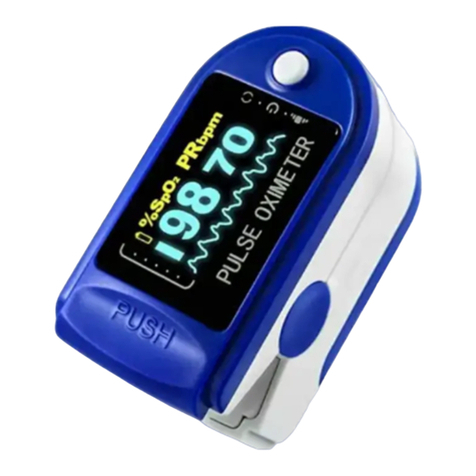
Luna®II CPAP / Luna®II Auto CPAP User Manual
Table of Contents
1. Introduction ··························································································· 1
2. Symbols·································································································1
2.1 Control Buttons············································································· 1
2.2 Device Symbols ············································································ 1
3. Warning, Caution and Important Tip ························································ 4
4. Intended Use ························································································· 4
5. Contraindications··················································································· 5
6. Specifications ························································································ 6
7. Available Therapies ················································································ 8
8. Glossary·································································································8
9. Model ··································································································· 9
10. Package Contents ············································································· 10
11. System Features·················································································· 11
12. First Time Setup ··················································································· 12
12.1 Placing the Device···································································· 12
12.2 Installing the Air Filter and Filter Cap············································ 13
12.3 Connecting to Power ································································ 13
12.4 Assembling the Tube and Mask ·················································· 14
12.5 Using Oxygen with the Device···················································· 15
12.6 Inserting the SD Card (Only for the device that equipped with SD
card) ······························································································ 17
12.7 Using the Cellular Module ·························································· 18
12.8 Starting Treatment····································································· 18
13. Routine Use ························································································ 18
13.1 Connecting the Tube ································································ 18
13.2 Adjusting the Tube ···································································· 18
13.3 Turning on the Airflow ································································ 18
13.4 Heating the Water ···································································· 18
13.5 Using the Ramp Button ······························································ 19
13.6 Turning the Device Off······························································· 19
14. Heated Humidifier··············································································· 19
14.1 Filling the Water Chamber ························································· 19
14.1.1 Removing the Water Chamber········································ 19
14.1.2 Filling Water ··································································· 20
14.1.3 Inserting the Water Chamber ·········································· 21
14.2 Emptying the Water Chamber ··················································· 21
14.3 Setting the Humidity Level·························································· 22
15. Navigating the Patient Menu······························································· 23
15.1 Steps to Navigating the Patient Menu········································· 23
15.1.1 Accessing the Main Interface ·········································· 23
15.1.2 Bringing up the Initial Setup Interface ······························· 23
15.1.3 Accessing the Setup Interface········································· 24
15.1.4 Selecting Options ··························································· 24
15.1.5 Adjusting Options ··························································· 24
15.1.6 Confirming Adjustments ·················································· 25
15.1.7 Turning Pages·································································25
15.1.8 Exiting the Patient Menu·················································· 25





























